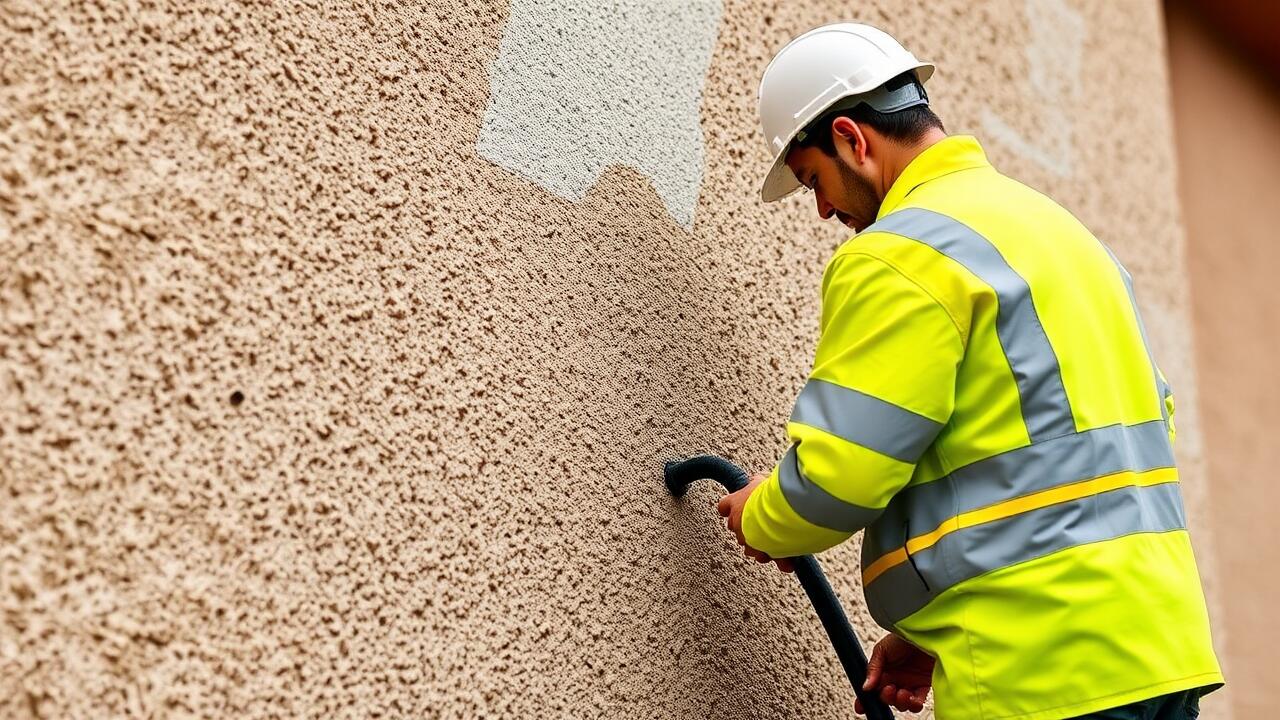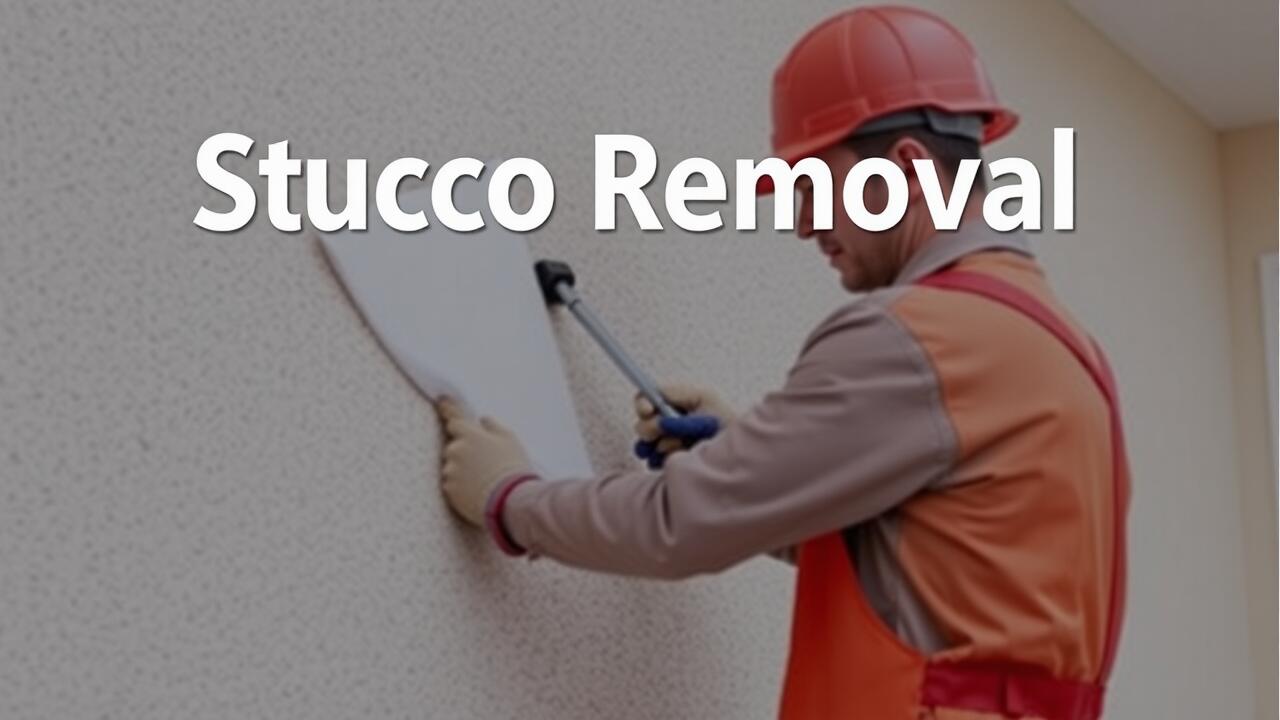
Managing Dust and Debris
Removing stucco often generates significant amounts of dust and debris. Establishing a cleanup plan before starting the project can help manage these factors effectively. Using drop cloths around the work area can catch falling particles and prevent them from spreading. Covering nearby plants and outdoor furniture with tarps protects them from dust accumulation. Employing a vacuum with a HEPA filter during removal activities can minimize airborne dust, making the surrounding environment more manageable.
In Canoga Park, Los Angeles Stucco Removal projects can benefit greatly from adopting thorough cleanup strategies. After the stucco is removed, it is crucial to gather and dispose of debris properly. Sweep and collect larger chunks of stucco first, and then use damp cloths or mops for the finer dust residues. Utilizing a designated disposal bag or container ensures that cleanup efforts remain organized and efficient while preventing the risk of debris scattering to other areas.
Effective Cleanup Strategies
When tackling a stucco removal project, a strategic cleanup plan is essential to keep the area safe and organized. Start by laying down drop cloths around the workspace. This prevents dust and debris from spreading to surrounding areas and minimizes the amount of time spent on post-removal cleanup. Keeping a trash bin nearby can help collect larger chunks of stucco as you work, streamlining the process. For residents in Sherman Oaks, Los Angeles, enlisting professional services can also enhance the efficiency of cleanup and ensure that materials are disposed of correctly.
After large debris has been managed, focus on finer dust and remnants. Use a shop vacuum for heavy-duty cleanup, ensuring that the area is thoroughly cleared of particles. Wet wiping surfaces with a damp cloth can also limit dust dispersion during the process. For those in Sherman Oaks, Los Angeles stucco removal professionals often provide additional tools and expertise to handle the remaining cleanup, making the transition to any further repairs or inspections much smoother.
Inspecting Underlying Structures
Before commencing the removal of stucco, it is crucial to inspect the underlying structures to assess their condition. Such inspections help identify any signs of damage that may have occurred over time. Look for cracks, moisture buildup, or signs of pest infestations, as these issues can compromise the structural integrity. Taking the time to thoroughly inspect the walls will provide valuable insights into the extent of any repair work needed after stucco removal.
Hiring professionals for the inspection process can be beneficial, particularly in areas like Van Nuys, Los Angeles Stucco Removal, where local experience can make a difference. Experienced contractors know what to look for and can make recommendations based on their findings. They can also detect less visible issues, such as problems with insulation or framing, ensuring a comprehensive evaluation. Addressing any underlying problems before proceeding can prevent future complications and costly repairs.
Identifying Possible Damage
When removing stucco, a thorough inspection of the underlying structures is crucial. Take the time to carefully examine the walls for signs of moisture intrusion, mold, or rot. Look for areas where the stucco may have trapped water, leading to potential decay in the framing or sheathing materials. Even small cracks or gaps in the stucco can indicate problems beneath the surface that need to be addressed.
In Canoga Park, Los Angeles stucco removal, homeowners should pay special attention to the condition of the wood framing and any insulation behind the stucco. Discoloration or soft spots in the wood can suggest water damage, while a musty odor may indicate mold growth. Identifying such damage early allows for timely repairs, ensuring that the integrity of the home remains intact throughout the remediation process.
Repairing Any Damage Found
Once you have identified any damage to the underlying structure, it’s essential to address these issues promptly. Depending on the extent of the damage, options vary from minor patching to more extensive repairs. For hairline cracks, a simple mixture of joint compound or stucco patch can effectively seal the area. If you uncover major structural weaknesses, you may need to consult a professional to assess the situation and recommend appropriate solutions.
During the repair process, maintaining the integrity of your home is crucial. Ensure you use high-quality materials that match the original stucco for seamless results. If you're unfamiliar with the repair techniques, consider hiring a contractor who specializes in Canoga Park, Los Angeles stucco removal. This can not only safeguard the structure but also provide a polished finish that complements the rest of your home.
Steps for Restoring Integrity
Once any damage has been identified and assessed, it is crucial to address repairs promptly. Start by cleaning the area thoroughly to remove any residual dust, debris, or loose materials. This preparation ensures that any new materials will adhere properly. After cleaning, apply a suitable bonding agent to the damaged surface. Use a patching compound or filler to restore any areas that require it, following the manufacturer's instructions for drying and curing times.
If the underlying structure is compromised, you may need to replace or reinforce specific components. This can involve adding new framing or installing additional moisture barriers to prevent future issues. Once repairs are completed, applying an appropriate primer and paint can help protect the underlying materials and improve aesthetics. Completing these steps will enhance the durability of your walls, especially in regions like Canoga Park, Los Angeles, where weather conditions can be harsh.
FAQS
What tools do I need to remove stucco safely?
Essential tools for removing stucco include a hammer, chisel, pry bar, utility knife, dust mask, safety goggles, and a vacuum or broom for cleanup.
How can I manage dust and debris during stucco removal?
To manage dust and debris, use drop cloths to cover surfaces, wear a dust mask, and frequently clean the area with a vacuum or damp cloth to minimize airborne particles.
What should I look for when inspecting underlying structures after stucco removal?
When inspecting underlying structures, check for signs of water damage, mold, or cracks in the framing and sheathing. Look for any areas where the stucco may have trapped moisture.
How do I repair any damage found during the inspection?
To repair damage, first remove any compromised materials, then replace or reinforce the affected areas, using appropriate materials for structural integrity, and finish with a moisture barrier before reapplying stucco.
Is it necessary to hire a professional for stucco removal?
While it's possible to remove stucco yourself, hiring a professional is advisable if you lack experience, as they can ensure the job is done safely and correctly, minimizing the risk of damage to underlying structures.


